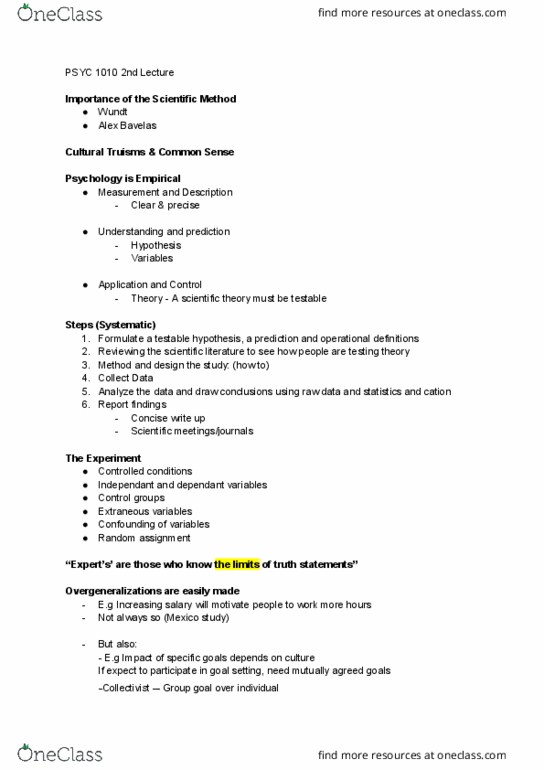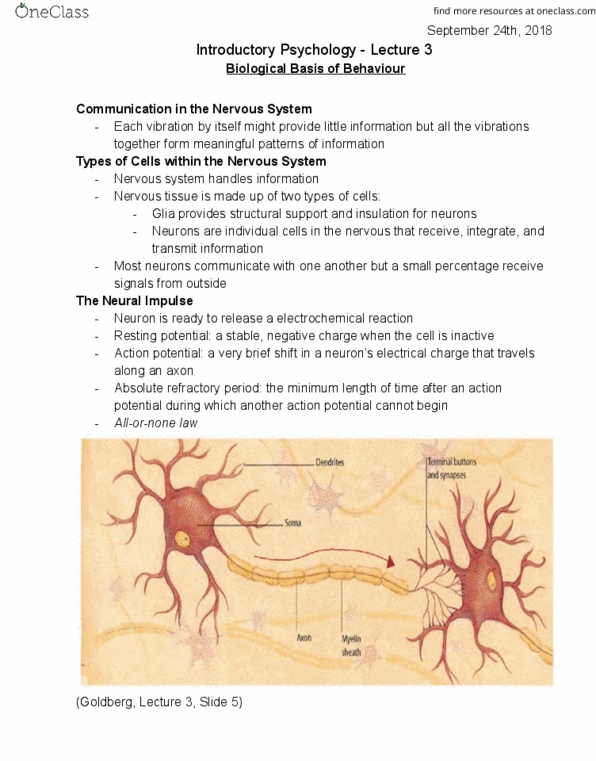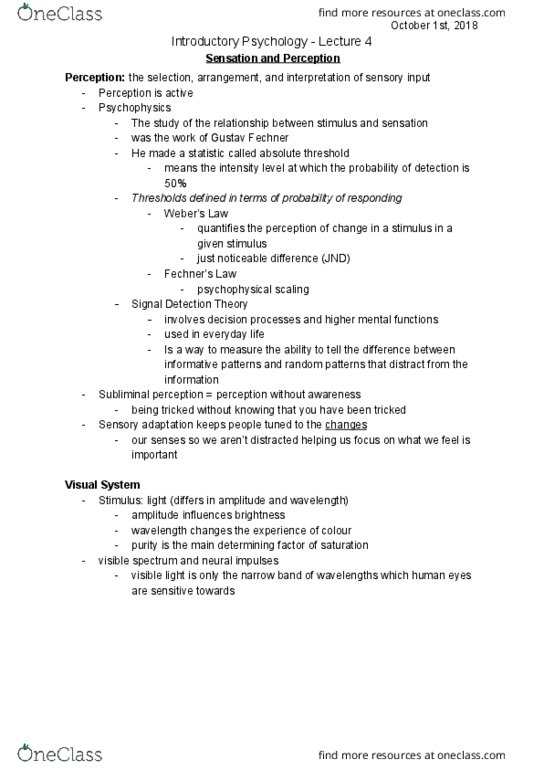PSYC 1010 Lecture Notes - Lecture 3: Twin, Autonomic Nervous System, Hindbrain
PSYC 1010 verified notes
3/10View all
Document Summary
Each vibration by itself might provide little information but all the vibrations together form meaningful patterns of information. Nervous tissue is made up of two types of cells: Glia provides structural support and insulation for neurons. Neurons are individual cells in the nervous that receive, integrate, and transmit information. Most neurons communicate with one another but a small percentage receive signals from outside. Neuron is ready to release a electrochemical reaction. Resting potential: a stable, negative charge when the cell is inactive. Action potential: a very brief shift in a neuron"s electrical charge that travels along an axon. Absolute refractory period: the minimum length of time after an action potential during which another action potential cannot begin. All-or-none law (goldberg, lecture 3, slide 5) The synapse: synaptic cleft: signals have to jump this gap neurotransmitters: travel from synaptic vessels (within the buttons) to receptor sites tuned to recognize and respond to specific neurotransmitters.




